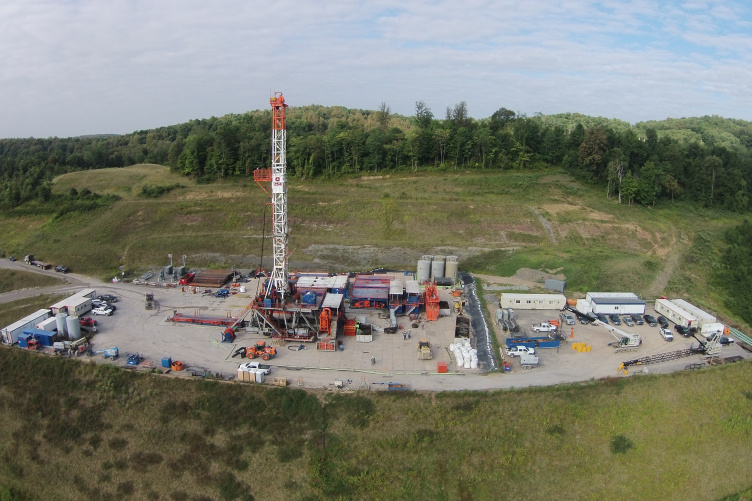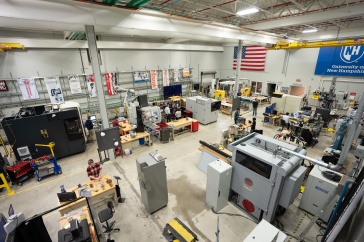
The Marcellus Shale Energy and Environmental Laboratory in West Virginia, where Mouser and her students will conduct some of their research.

Almost a third of the gas produced in the U.S. — more than 16 trillion cubic feet in 2017 — was extracted by hydraulically fracturing shale deep below the Earth’s surface to release natural gas. But as “fracking” sends equipment and fluids into this previously untouched environment two kilometers below us, it introduces microbes that can alter the ecosystem.
With a new U.S. Department of Energy (DOE) grant, UNH associate professor of civil and environmental engineering Paula Mouser aims to understand how the organisms fracking brings into this new environment adapt and thrive. Her findings will help engineers and the industry manage microbial communities that can affect the quality of the gas, clog shale fractures and foul extraction equipment.
“Fracking sends down millions of liters of water from the surface containing trillions of microbial cells and fracking chemical additives; this combination creates a new deep subsurface ecosystem,” Mouser says, comparing the process to humans introducing microbial matter to an environment like the moon. “The microbiology affects the value of the resource we’re developing, including how much we recover.”
“Fracking sends down millions of liters of water from the surface containing trillions of microbial cells and fracking chemical additives; this combination creates a new deep subsurface ecosystem.”
With the grant of $740,000, Mouser will assemble a team of undergraduates, graduate students and a postdoctoral researcher to study the role that microbial membranes — the “skin” of these microbes — play in helping the organisms adapt. “Like our skin, these membranes are constantly adapting based on temperature, nutrient availability and other environmental factors,” she says. “This affects the organism’s ability to attach to a surface” — like shale fractures or fracking well equipment.
The funding, through the DOE’s Established Program to Stimulate Competitive Research or EPSCoR initiative, will enhance the UNH researchers’ partnerships with two DOE national laboratories, the National Energy Technology Laboratory in Pittsburgh, Pennsylvania, and the Environmental Molecular Science Laboratory at the Pacific Northwest National Laboratory in Washington state. Mouser and her students will visit and collect samples from a large DOE-funded research field site in West Virginia, the Marcellus Shale Energy and Environmental Laboratory or MSEEL.
While fracking is not without controversy, Mouser says her research aims to bring rigorous science to the production of a resource ubiquitous in our daily lives.
“We use fossil fuels to heat our homes and drive our cars; they’re in almost every product we see around the house,” she says. “We’re all responsible for the demand of our natural resources.”

-
Written By:
Beth Potier | UNH Marketing | beth.potier@unh.edu | 2-1566

















































